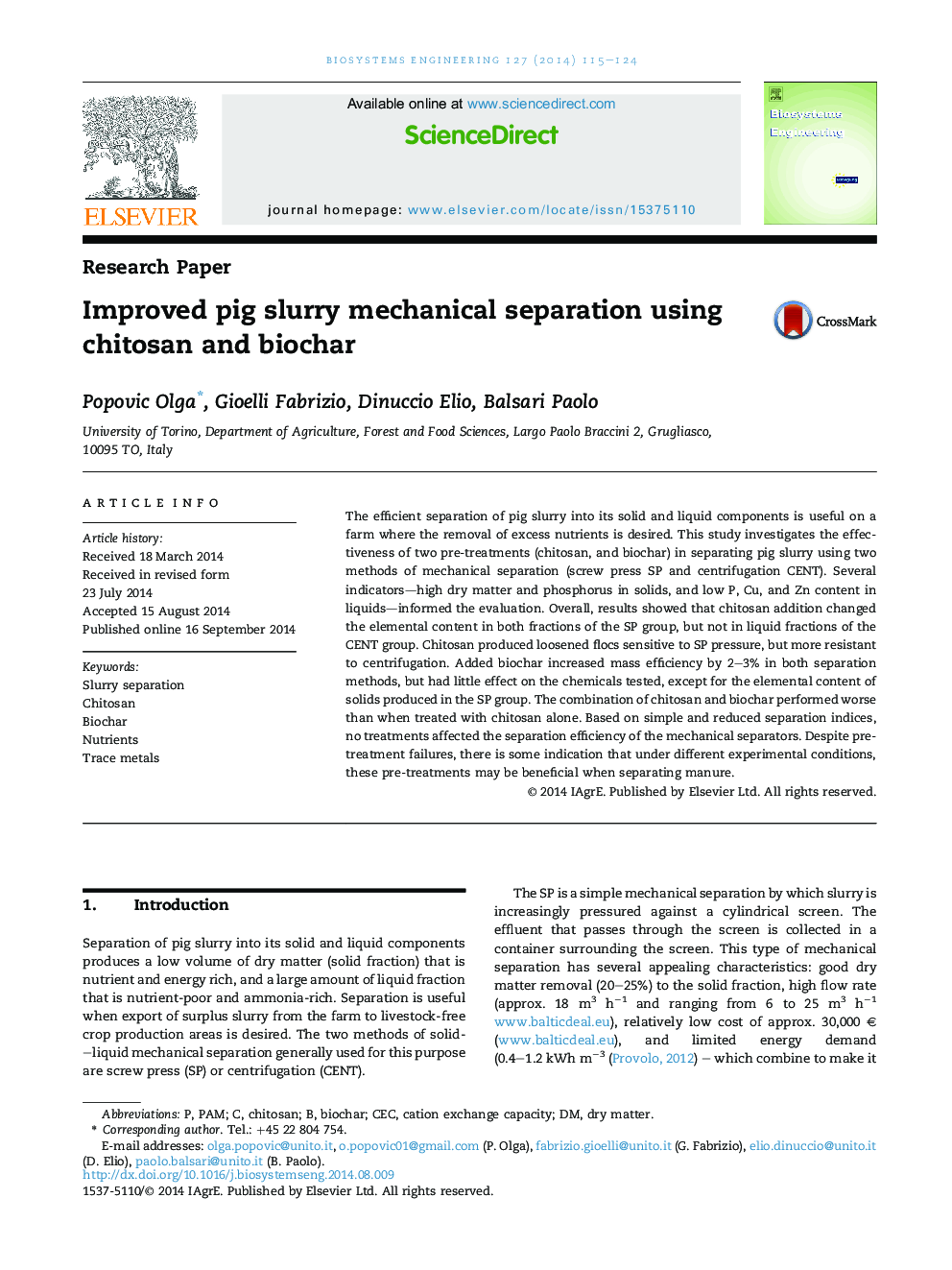| Article ID | Journal | Published Year | Pages | File Type |
|---|---|---|---|---|
| 1711109 | Biosystems Engineering | 2014 | 10 Pages |
•Chitosan changed elemental content of both fractions with screw press.•Biochar or chitosan or both did not raise screw press or centrifuge efficacy.•Chitosan produced loose flocs more sensitive to pressure than to centrifugation.•When combined with biochar, chitosan performed less well than when applied alone.
The efficient separation of pig slurry into its solid and liquid components is useful on a farm where the removal of excess nutrients is desired. This study investigates the effectiveness of two pre-treatments (chitosan, and biochar) in separating pig slurry using two methods of mechanical separation (screw press SP and centrifugation CENT). Several indicators—high dry matter and phosphorus in solids, and low P, Cu, and Zn content in liquids—informed the evaluation. Overall, results showed that chitosan addition changed the elemental content in both fractions of the SP group, but not in liquid fractions of the CENT group. Chitosan produced loosened flocs sensitive to SP pressure, but more resistant to centrifugation. Added biochar increased mass efficiency by 2–3% in both separation methods, but had little effect on the chemicals tested, except for the elemental content of solids produced in the SP group. The combination of chitosan and biochar performed worse than when treated with chitosan alone. Based on simple and reduced separation indices, no treatments affected the separation efficiency of the mechanical separators. Despite pre-treatment failures, there is some indication that under different experimental conditions, these pre-treatments may be beneficial when separating manure.
